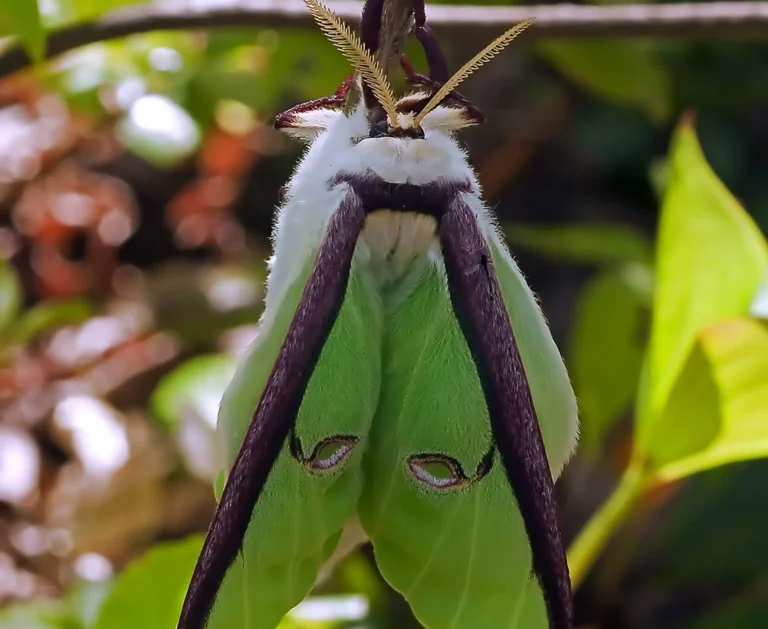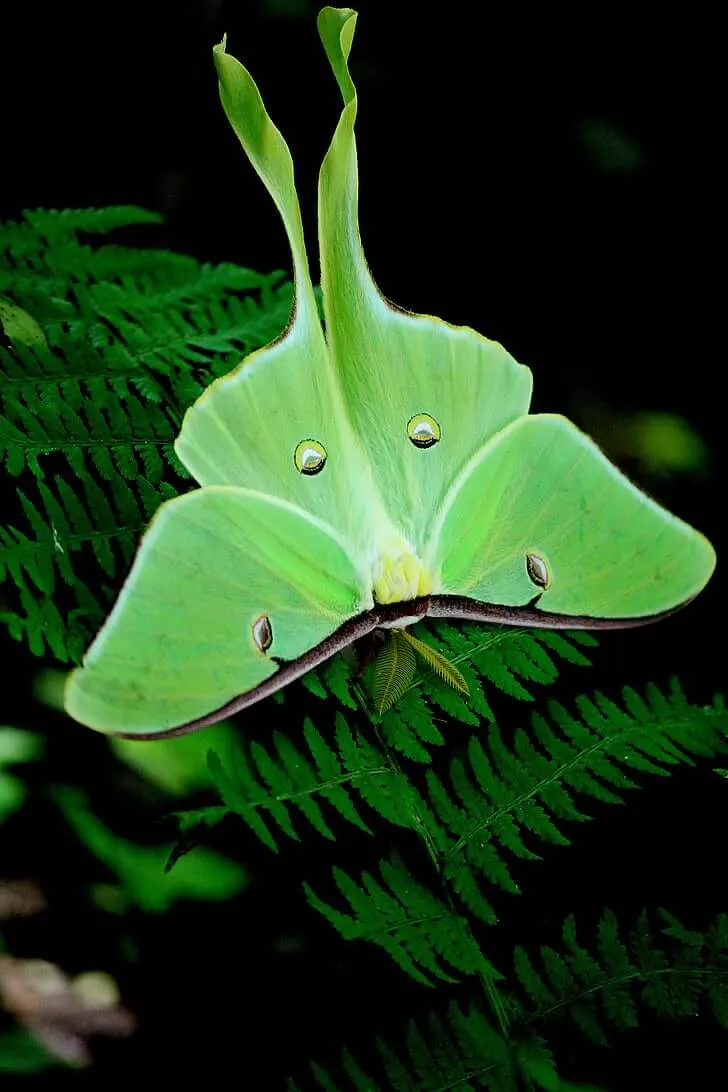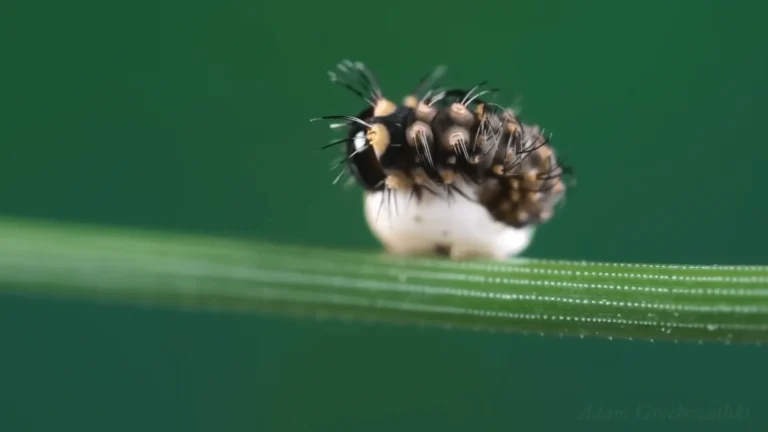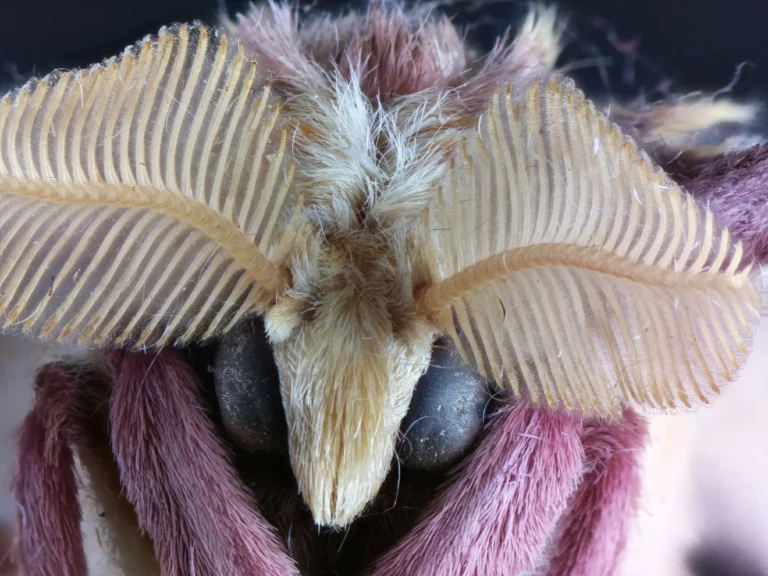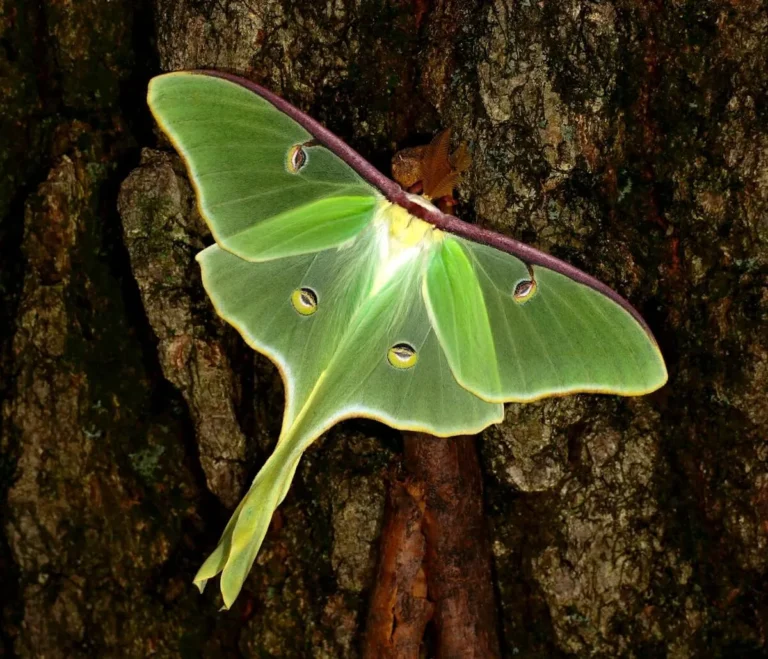The Ultimate Purple Luna Moth Guide: Facts, Habitat, & Why They Matter
Imagine stepping into a garden at dusk and seeing a beautiful, rare creature fluttering around with wings that have a magical purple hue. Yes, we are talking about the fascinating purple Luna moth.
This special kind of moth is not seen very often, making it a delightful sight for those lucky enough to spot one. Luna moths are generally known for their beautiful green wings, but there is a rare variety that sports a purple color, making them even more interesting and mysterious.
In this article, we will take a closer look at everything that makes the purple luna moth so unique and wonderful. We will explore their physical traits, where they live, what they eat, and much more.
Get ready to learn some amazing facts about these lovely creatures!

Table of Contents
Scientific Classification
In the world of living things, every creature is sorted into different groups. This helps us know more about them. The purple luna moth is part of a big group of insects. Let’s understand where they stand in this big group:
- Kingdom: Animalia – This means they are animals, just like dogs or cats.
- Phylum: Arthropoda – This is a group of animals that have jointed legs. Most insects are in this group.
- Class: Insecta – This class includes all insects, whether they are butterflies or ants.
- Order: Lepidoptera – Here we have insects with scaly wings, like butterflies and moths.
- Family: Saturniidae – This family is all about moths, especially the big and colorful ones.
- Genus: Actias – This is a smaller group within the family, which includes moths with a particular type of wing shape and colors.
- Species: Actias luna – Finally, we come to our star, the luna moth, which has a rare purple variety we are focusing on.
Up next, we will talk about what makes the purple luna moth look so special in the “Physical Characteristics” section. Stay tuned!
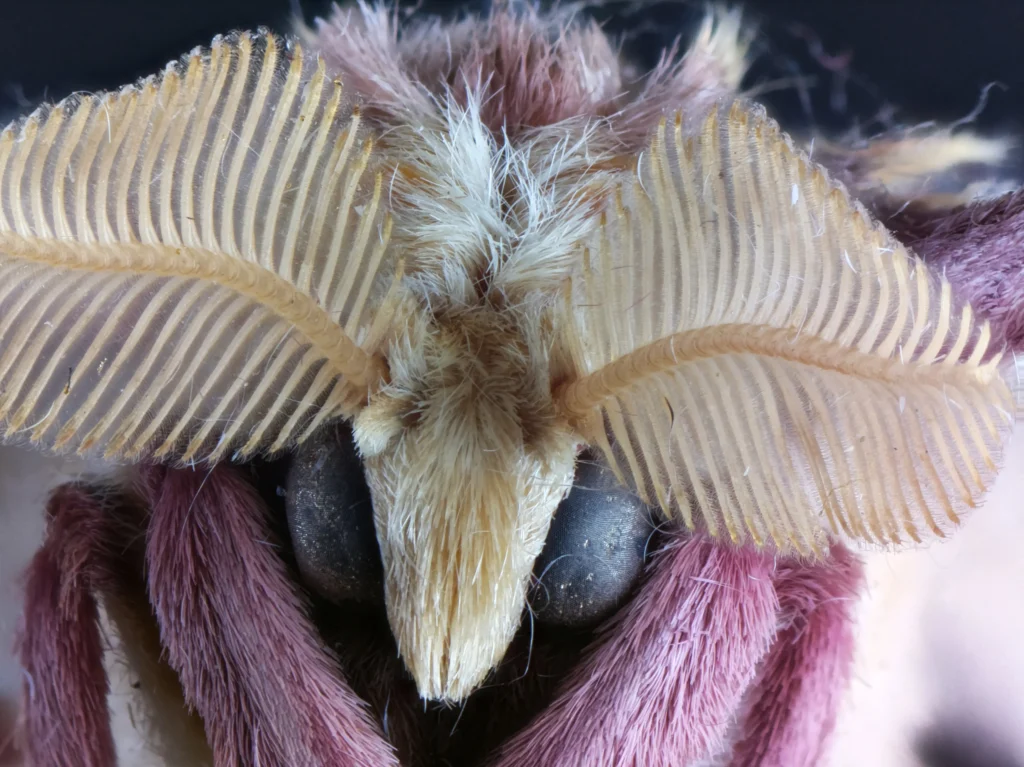
Physical Characteristics
The purple luna moth is truly a sight to behold. Let’s chat about what makes it so special, starting with its standout feature, and its lovely purple wings.
You can learn more about the Luna moth’s lifespan and lifecycle here.
Color and Appearance: When we think of Luna moths, a green color comes to mind. But the purple luna moth breaks the norm with its stunning purple wings. It is a rare treat to see one. Its wings have a mix of light and dark purple shades, which look like a beautiful painting.
Wingspan: The wings of this moth are not just pretty; they are also quite big. A purple luna moth can have a wingspan of up to 4.5 inches. That’s about as long as a small ruler!
Body Structure: The body of this moth is quite slender. Its body is covered in tiny scales, which gives it a somewhat fuzzy appearance. It has six legs that it uses to move around and hold onto surfaces.
Antennae: The antennae of the purple luna moth are feather-like. They use these to smell and find their way around. The antennae are like their little radar systems.
Eyes: Even their eyes are quite fascinating. They have large eyes that help them see in the dark, which is when they are most active.
Through this journey, we are learning that every little detail about the purple luna moth is a mix of beauty and function, making it one of nature’s masterpieces.

Next, we will explore the places where these moths love to live in the “Habitat” section. Keep reading!
Habitat
The purple luna moth loves to be where nature is at its best. Let’s find out the kind of places where this beautiful moth likes to hang out:
Geographical Distribution:
These moths are mostly found in North America. They love areas that are green and have lots of trees. So, you can often find them in forests, gardens, and parks.
Preferred Habitats:
Purple luna moths enjoy calm, peaceful places. They love being around trees and plants where they can easily hide and find food. These moths are not really fans of busy city areas; they prefer the quiet corners of nature.

Adaptation to the Habitat: The purple luna moth has a smart way of blending in with its home. The purple color helps it hide among the flowers and leaves. This way, it can stay safe from birds and other animals that might want to eat it.
This pretty moth knows how to pick the best spots to live, where it can flutter around happily and safely. It’s always a pleasant surprise to spot one in a lovely green area, adding a touch of magic to the surroundings.
Lifecycle and Behaviour
The life of a purple luna moth is a beautiful journey that happens in stages. Let’s walk through each stage to understand how this wonderful insect grows and changes.
Egg: The story starts with a tiny egg. The mommy moth lays these eggs on the leaves of trees. In about a week or so, a tiny caterpillar comes out. It’s the beginning of a new life!
Larva (Caterpillar Stage): The little caterpillar is very hungry. It starts eating the leaves it was born on. As it eats, it grows bigger and bigger. This stage is all about eating and growing. The caterpillar is green, which helps it hide from enemies.

Pupa (Cocoon Stage): After some time, the caterpillar finds a quiet spot to take a long nap. But it’s not just any nap! It wraps itself in a silky cocoon and starts to change. Inside the cocoon, it is busy turning into a beautiful moth.
Adult (Moth Stage): One day, the cocoon opens, and out comes a beautiful purple luna moth. It is now a grown-up moth with big, beautiful wings. It’s time for it to fly and explore the world.
Mating and Reproduction: Adult moths have a short life. They quickly find a partner to mate with. Then, the female moth lays eggs, and the cycle starts all over again. It’s a circle of life that keeps going.
Lifespan: The purple luna moth doesn’t live very long. From the time it comes out of the cocoon, it only has about a week to enjoy flying around. Even though it’s short, its life is full of beauty and adventure.
This journey from a tiny egg to a stunning moth is a beautiful tale of transformation and growth.
Dietary Habits
What do these beautiful moths eat? Their food choices change as they grow from tiny caterpillars to elegant moths. Let’s find out more about their dietary habits.

Larval Stage Diet
When the purple luna moth is a little caterpillar, it loves to munch on leaves. Different types of leaves can be their food, like walnut, hickory, or sweet gum leaves. They eat a lot at this stage because they are growing fast.
Adult Stage Diet
As the caterpillar turns into a moth, their eating habits change too. Surprise, surprise, the adult moths do not eat at all! Their job is to find a partner and lay eggs for the next generation. They use the energy stored from their caterpillar days to fly around.
Importance of Diet in Their Lifecycle
The diet is a vital part of their lifecycle. When they are caterpillars, they need to eat a lot to have enough energy to turn into moths.
Once they become moths, their focus shifts to finding a mate and starting the next generation of purple luna moths.
Eating the right food when they are young helps them grow strong and healthy. It prepares them for the important job they have to do as adults: to keep the circle of life going for their species.

Conservation Status
In this section, we will learn about the well-being of the purple luna moth population and how we can help protect them. It is crucial to know if they are safe and thriving in their natural homes.
Current Status
As of now, the purple luna moth is not on the endangered list. This means that there are a good number of them fluttering around.
However, this doesn’t mean that we shouldn’t care for them. Keeping their homes safe is a big step in ensuring their numbers stay healthy.
Threats and Challenges
Just like many other creatures, the purple luna moth faces some troubles. One big issue is the loss of their natural homes.
When forests are cleared, they lose their favorite spots to live and find food. Also, bright city lights can confuse these moths and make it hard for them to find their way.

Conservation Efforts
To help keep the purple luna moth population strong, efforts are being made to protect their habitats. People are encouraged to plant more trees and create green spaces where these moths can thrive.
Education about the importance of these creatures is also a vital step in their conservation. By learning about these moths and how to protect them, we can all play a part in keeping them safe.
It is a joy to have these beautiful creatures as a part of our natural world, and it’s up to us to help them flourish.
Symbolism and Cultural Significance Of Purple Luna Moth
The purple luna moth is not only a beautiful sight to behold, but it also holds a deep meaning and significance in various cultures.
To look further into the meaning and symbolism of Luna moths, visit our detailed guide. Let’s explore the different ways people see and appreciate this majestic creature:
Symbol of Transformation
The purple luna moth has a unique life cycle where it transforms from a small caterpillar into a magnificent moth. This process of change makes it a symbol of transformation and growth. It shows us that change can be a beautiful thing.
Symbol of Mystery and Beauty
With its rare purple hue and nocturnal habits, this moth is often seen as a symbol of mystery and beauty. Its appearance at night adds a magical touch to its surroundings, creating a sense of wonder and allure.

In Art and Literature
The beauty of the purple luna moth has inspired many artists and writers. Its elegance and mystical appearance make it a popular subject in art and literature, where it is portrayed as a symbol of beauty, grace, and mystery.
Spiritual Significance
In some cultures, the luna moth is believed to have spiritual significance. Its night-time flight is seen as a journey into the spiritual world, symbolizing intuition, dreams, and the unseen realities of life.
By being aware of the deep meanings and stories associated with the purple luna moth, we can appreciate it even more. It is not just a pretty face, but a creature rich with symbolism and cultural significance.
Purple Luna Moth Fun Facts
Get ready to be amazed by some cool facts about the purple luna moth. These details will surely make you appreciate this beautiful insect even more.

- Night Flyers: These moths love the nighttime. They fly around when it’s dark and quiet, making the most of the peaceful night hours.
- Silent Wings: When the purple luna moth flies, it does so silently. Its wings don’t make noise, which adds to its mysterious nature.
- No Mouth: Here’s a big surprise – adult purple Luna moths do not have a mouth! Since they don’t eat in their adult stage, they don’t need one. It’s one of nature’s interesting twists.
- Natural Camouflage: The purple hue of this moth is not just for show. It helps them blend into their surroundings, keeping them safe from predators.
- Short Lifespan: Although their life is short, spanning only about a week in their adult stage, they make the most of it by focusing on creating the next generation of purple luna moths.
- Sensational Antennae: Their feather-like antennae are not just pretty to look at. They play a crucial role in helping them navigate and find mates in the dark.
- A Sight Rarely Seen: Spotting a purple luna moth is considered a rare and special event. Their unique color and nocturnal habits make them a rare sight, adding to their magical allure.
Explore more about the fascinating world of pink and yellow moths and their symbolism in different cultures.
Conclusion
We have learned a lot about the purple luna moth in our journey together. Let’s sum up what we know about this beautiful night creature and why we should take steps to protect it.
Summary Of Purple Luna Month
The purple luna moth is a lovely insect that lights up the night with its pretty purple wings. Its life starts as a small egg, and then it grows into a hungry caterpillar.
After a nice long sleep in a cocoon, it wakes up as a beautiful moth. Even though they live a short life, these moths have a big job to do: to lay eggs for the next group of moths to start their lives.
The Significance of Conserving the Species
Taking care of the purple luna moth is important. They are a special part of our world, adding beauty and magic to our nights. By keeping their homes safe and clean, we help these lovely moths live happily and healthily.
When we protect them, we also keep the circle of life going, letting every new generation of moths have a good start.
Frequently Asked Questions
Are purple Luna moths real?
Yes, purple Lun moths are real. They are a type of moth that has beautiful purple wings. They are not very common, so seeing one is a special treat!
Where do purple Luna moths live?
Purple luna moths live in green, leafy areas where they can find lots of food for their caterpillar stage. They like places with many trees and plants.
Are Luna moths lucky?
Many people believe that seeing a luna moth can bring luck. Their rare appearance and beautiful colors make them a lovely sight to see, bringing joy and happiness to those who spot them
Do purple Luna moths bite or sting?
No, purple Luna moths do not bite or sting. They are gentle creatures that mainly focus on laying eggs and continuing their lifecycle. They are safe to be around.
What do purple Luna moths do during the day?
During the day, purple luna moths rest and stay hidden. They are night-time creatures, which means they are most active during the night when they fly around looking for mates.
Can I keep a purple Luna moth as a pet?
It is not recommended to keep a purple Luna moth as a pet. They are wild creatures and they are happiest when they are free to fly in their natural homes. It’s best to admire them in their natural environment.


